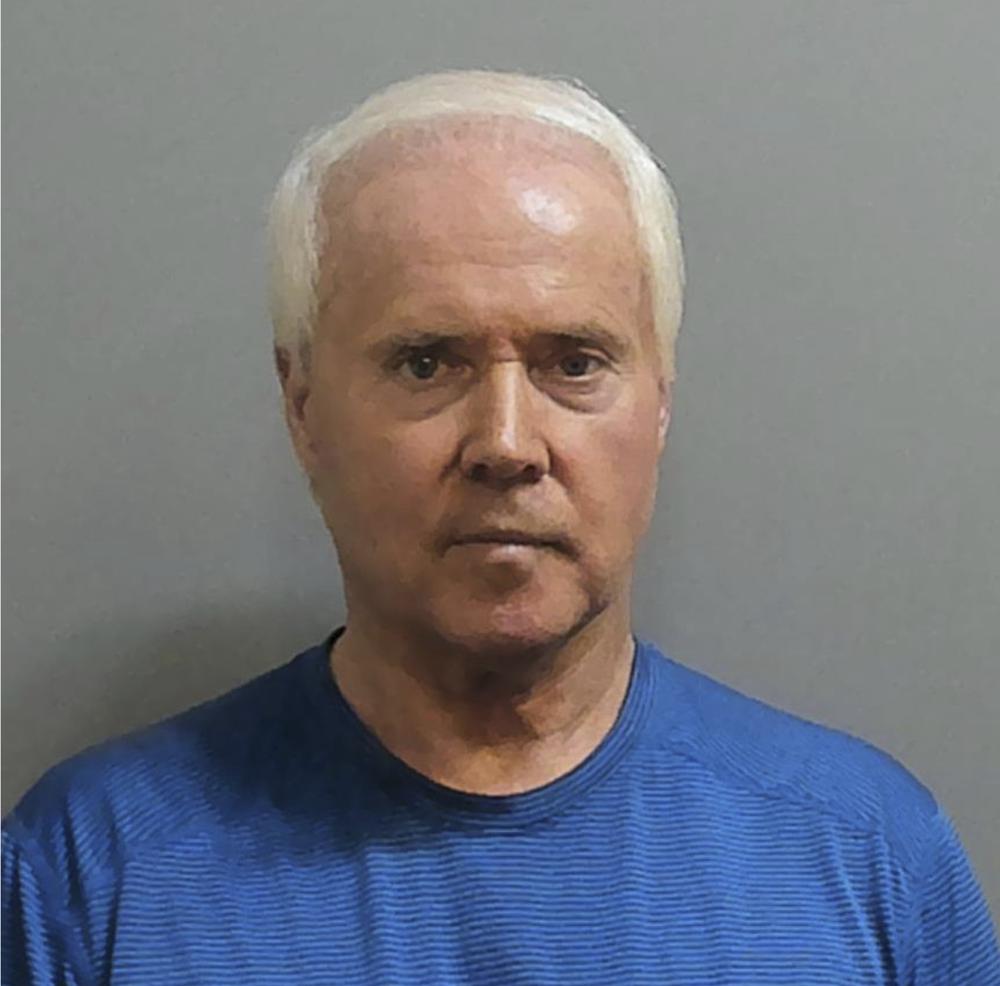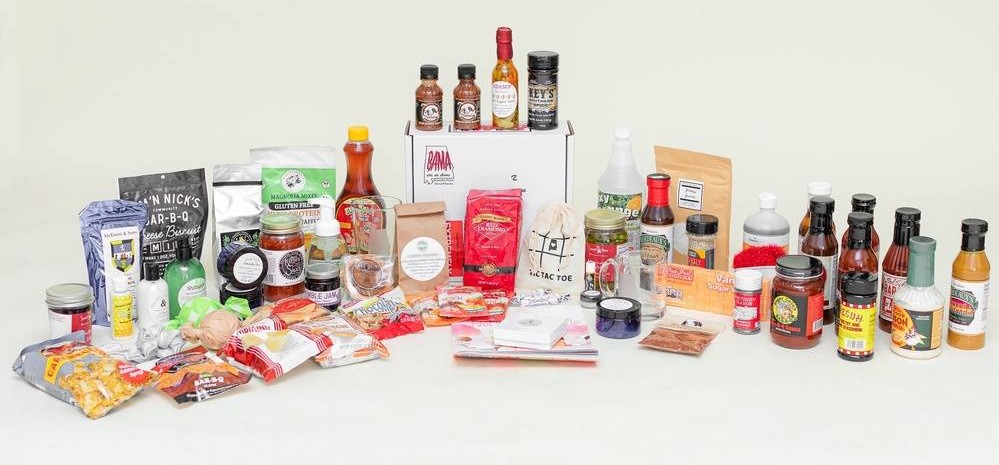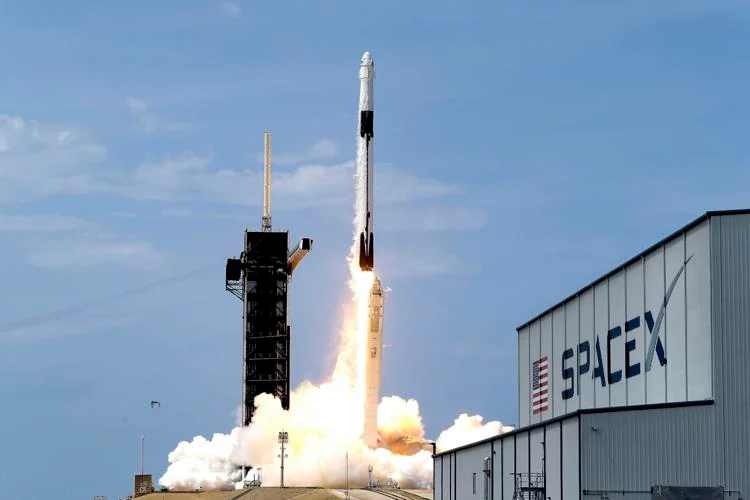Perry Hooper indicted on sex abuse charges

Former State Representative Perry Hooper Jr., age 68, was indicted on sex abuse charges by a Montgomery County grand jury on Friday. Hooper was arrested in August after an incident at a downtown Montgomery restaurant on Commerce Street. Hooper has been a fixture in Alabama Republican Party politics for decades. He is a member of the Alabama Republican Party Executive Committee representing Montgomery County and a member of the Board of the Alabama Music Hall of Fame. Hooper was a frequently published political commentator whose columns were frequently published in 1819 News and the Montgomery Advertiser. According to an affidavit, Hooper approached a woman working at the restaurant from behind and allegedly grabbed her breasts and waist in an unsolicited embrace while shoving his pelvis against the victim’s backside and began kissing her neck before she was able to break free. The victim reportedly testified before the grand jury. If convicted, Hooper could face a maximum of 10 years in prison and a $15,000 fine for the charge. Hooper’s next court date is scheduled for December 21. The case has been assigned to Circuit Judge J.R. Gaines. Hooper is represented by veteran Montgomery defense attorney Joe Espy. Hooper served in the Alabama House of Representatives from 1983 to 2002. Hooper was an early backer of Donald Trump in the 2016 Republican primary season and chaired the Trump Victory Fund in the 2016 campaign. Hooper was a Trump bundler and frequent visitor to the Trump Whitehouse as well as Trump’s Mar-A-Lago Resort. Hooper’s father, Perry Hooper Sr. – now deceased, was the first Republican Chief Justice of the Alabama Supreme Court since Reconstruction. Hooper is married and has three sons and a number of grandchildren. The Alabama Republican Party has released a statement condemning sex abuse. An indictment is merely the finding by a grand jury that the prosecution has presented enough evidence for a jury trial to take place. Hooper will have an opportunity to present a defense at trial before a jury of his peers. To connect with the author of this story, or to comment, email brandonmreporter@gmail.com.
Political consultant Angi Horn promotes made in Alabama products for holiday season

Bama in a Box is an online retailer based in Troy. Bama in a box has launched a holiday shopping campaign to encourage Alabamians to keep their holiday shopping dollars in Alabama while simultaneously supporting small businesses across the state. Bama in a Box was launched by entrepreneur and political consultant Angi Horn during the COVID-19 global pandemic as a way to give consumers exposure to quality-made products while giving Alabama small businesses, many of whom lacked marketing budgets, exposure to new customers. Now, Bama in a Box wants to take that same “Shop Local” mentality that was their focus during the forced economic shutdowns and the pandemic paranoia and promote it in the minds of Christmas shoppers. Horn is a former Governor Robert Bentley adviser and helped with Wes Allen’s campaign. “The majority of almost every household’s gifting budget is spent during the Christmas season,” Horn said. “By choosing to buy your Christmas presents as Alabama-owned businesses instead of spending them with large national and international companies means that Alabama businesses benefit from your holiday purchases instead of companies based out of state or out of the country.” Bama in a Box tries to make the process of holiday shopping in Alabama as easy as possible by curating a large line of specialty gift boxes that are comprised completely of Alabama-made products. These boxes are designed to target the needs of most Christmas shopping lists. Every included item is an Alabama-made item from an Alabama-owned business. “Every specialty gift box that Bama in a Box has for Christmas represents 5-7 Alabama small businesses,” Horn said. “With each gift, you are giving your money to Alabama entrepreneurs across the state, and you are keeping your tax dollars in Alabama to help our schools, our hospitals, and our roads instead of sending them out of state where you see no benefit from them. We are trying to make it easy to shop Alabama by creating a one-stop-shop, but we just want everyone to buy from Alabama-owned businesses. If they buy from us, great. If they buy from a different Alabama-owned company, that is great too! Just buy Alabama!” Horn said that Bama in a Box was born from the frustration caused by the coronavirus pandemic of 2020. As a small business owner, she understood first-hand how hard the pandemic regulations were on small businesses. As a consumer, she realized how difficult it was to find products that were made in America and even harder to find those that were made in Alabama. After some research, Horn found more than 500 high-quality products that most people use regularly are produced right here in Alabama. After a conversation with her associate, Laney Kelley, Horn realized that Alabama small businesses needed a more convenient way to get their products in front of potential customers and that people needed more convenient access to products made in Alabama. To connect with the author of this story, or to comment, email brandonmreporter@gmail.com.
Online job ads are up 17.3% from October last year

The Alabama Department of Labor’s Labor Market Information (LMI) Division reports that online job ads were up in October 2022, 17.3% from last year. The Labor Department reports that there were 109,337 online job ads, which is up 1.7% from September, with an increase of 1,790 online ads. The five occupations with the most online job ads in the state are registered nurses, retail salespersons, supervisors of retail sales workers, customer service representatives, and software developers. There were 16,126 ads placed for those occupations alone during October. The Department compiles the help wanted online data from all online job postings in the state, including those posted on the state’s free online jobs database, alabamaworks.alabama.gov, and other sources, such as traditional job boards, corporate boards, and social media sites. Twenty-six percent of job ads have salaries of $75,000 and above. 22% of the available positions have salaries in the $50,000 to 75,000 range. 20% of the ads have salaries in the $35,000 to 49,000 range. Just 32% of the online ads were for positions with salaries of $35,000 or less. The top two employers posting the most online ads in October were Huntsville Hospital with 1,487 and UAB Health System with 1,237. The rest of the top 10 were: Encompass Health (678), Walmart/Sam’s (652), University of Alabama at Birmingham (602), Baptist Health (569), Lowe’s (526), Auburn University (450), Walgreens (450), and Aramark (432). This month the Department of Labor’s help wanted online occupation focus is physical therapists. Those employed in this occupation assess, plan, organize, and participate in rehabilitative programs that improve mobility, relieve pain, increase strength, and improve or correct disabling conditions resulting from disease or injury. Physical Therapists may also plan, prepare, or carry out individually designed programs of physical treatment to maintain, improve, or restore physical functioning, alleviate pain, or prevent physical dysfunction in patients. Perform and document an initial exam, evaluating data to identify problems and determine a diagnosis prior to intervention. Record prognosis, treatment, response, and progress in the patient’s chart or enter information into the computer. Typically, this occupation requires a graduate’s degree. In Alabama, the advertised median salary for Physical Therapists is $79,730. This occupation has 170 total openings in Alabama currently. Alabama’s preliminary, seasonally adjusted October unemployment rate is 2.7%. That is well below October 2021’s rate of 3.1%. The U.S. unemployment rate is 3.4% in October. “Our wages continue to move in the right direction, more world-leading firms are relocating here every day, and our workforce development efforts are producing newly credentialed workers almost every day,” Alabama Governor Kay Ivey said. It’s more than apparent that we have much to be thankful for as we head into the holiday season.” To connect with the author of this story, or to comment, email brandonmreporter@gmail.com.
David Williams: With rocket launch comes a payload of red ink

At long last, liftoff. On November 16, the Space Launch System (SLS), an immensely powerful rocket, kickstarted a weeks-long round-trip journey to the moon. So far, the Orion capsule perched on the rocket appears on track to approach and orbit the moon. When the spacecraft returns to Earth and splashes into the Pacific in December, the bipartisan backers of the lunar mission will surely hail the endeavor a success. But, the resurgent and unreserved enthusiasm for the National Aeronautics and Space Administration (NASA) reveals a critical flaw in public policy priorities. Rather than championing space exploration at any cost, lawmakers should push for cost-effective missions with private sector involvement. With $30 trillion in debt and counting, now is not the time for another black hole of wasteful spending. Even if Orion safely hurdles back to Earth, the current unmanned expedition is only one part of a larger sequence of Artemis missions. Once flight paths around the moon are adequately tested via the Orion voyage, the 5.7-million-pound SLS rocket will carry astronauts back to the lunar surface for the first time in more than half a century. The importance of the SLS rocket has certainly not been lost on appropriators. Ten years ago, prevailing opinion at America’s space agency was that the rocket would only take five years to develop and cost “only” $6 billion. Not surprisingly, development costs ballooned to $20 billion, along with a $4 billion per launch bill for taxpayers. As NASA Inspector General (IG) Paul Martin noted in a March meeting of the House Subcommittee on Space and Aeronautics, the per launch price tag is “unsustainable” and “does not include development costs required to get the Artemis program to this point in time.” SLS rocket costs are only a small quadrant in a wider galaxy of wasteful mission spending. The IG found that NASA has already spent $40 billion to get astronauts back to the moon and will likely spend nearly $100 billion total on the endeavor. Even if this mission is “successful” and astronauts manage to build a lunar base and conduct research free from harm, the goalposts for manned missions will shift at taxpayers’ expense. Combined mission (and settlement) costs to the moon and Mars could easily rival interest payments on the debt – which are projected to grow significantly due to rising expenditures and climbing interest rates. The exorbitant space exploration bill could be justified if mankind was mired in a sci-fi dystopia and had to leave the Earth pronto. If policymakers got their heads out of the clouds, though, they’d realize that robotic exploration can complete missions at a fraction of manned exploration costs. Cambridge cosmology and astrophysics professor and astronomer royal Martin Rees rightly notes, “the practical case (for human spaceflight) gets weaker and weaker with every advance in robotics and miniaturization.” NASA seems to agree: “[r]obots don’t need to eat or sleep or go to the bathroom. They can survive in space for many years and can be left out there – no need for a return trip!” And prolonged human forays into space are not without their health risks. The risks – ranging from radiation to the psychological impacts of isolation – can squander precious lives and lead to all sorts of mission complications. That’s not to say that humans should never endeavor toward the stars. But, given the large costs and risks currently thrust on taxpayers, manned exploration makes more sense as a private-sector undertaking. Already, companies are signing up to develop the successor to the International Space Station. There’d surely be an upside in taking private ambitions to the moon and Mars, especially if these celestial bodies could serve as bases for asteroid mining. And naturally, many would pay top-dollar to step foot on an alien world. Even if these capitalistic aspirations are decades away, there needn’t be any rush to get some thick-soled boots on the ground. In the meantime, NASA should stick with inexpensive unmanned missions and work with lawmakers to keep spending low. Space can be traversed without strapping future generations to a payload of red ink. David Williams is the president of the Taxpayers Protection Alliance.
Task force looking at solutions to Alabama’s health care worker shortage

Against the backdrop of a national trend, an Alabama legislative panel is exploring methods of shoring up deficits that have arisen in the state’s health care worker pool in recent years. Data from the U.S. Bureau of Labor Statistics suggests about 20% of the health care industry’s workforce has departed the field since the onset of the pandemic. In Alabama, the trend has impacted a number of specific jobs, including certified nursing assistants, EMT, and paramedics, and licensed practical nurses for assisted living facilities. In recent months, the Alabama Healthcare Workforce Task Force has been meeting to look at ways of streamlining the link between college and university students and employers. The task force was created in Alabama’s 2022 legislative session through Senate Joint Resolution 62. The task force’s most recent meeting, held Nov. 17, included one firm recommendation – ramping up efforts with the Alabama Dental Association to bring programs into rural areas of the state – and discussing additional efforts in other health care professions with consultants. Greg DiDonato with the firm EBSCO Information Services was among the speakers at the meeting. DiDonato discussed a pilot effort that is in the works and is designed to comb through college student data, work with state college and university apprenticeship offices, and provide a database of job opportunities within the state in targeted health care jobs. The goal, DiDonato said, is to have the database up and running in the first quarter of 2023. “We are in the process of going through student data,” DiDonato said. “Ultimately, the goal is to expand the opportunities that are seen, outside of the traditional job partnerships. We are looking to expand those opportunities.” While online job boards provide regular listings of available positions, DiDonato said the pilot database project would create a more comprehensive, better organized, and more user-friendly list of jobs that are available. The meeting included a discussion of what state agencies and higher-education officials can do to better harness federal funds for health care workforce development within Alabama. A report shared at the meeting indicated federal funds are, at times, missed within Alabama for a number of reasons, including a lack of collaboration and resources within state government. The goal, according to the task force, is to conduct a wholesale review of how health care workforce opportunities can be enhanced – particularly since some specific medical professions are inherently dependent on others. “It’s amazing to me the amount of work that has taken place these past few months and the amount of work that has been done,” said state Sen. April Weaver, R-Brierfield, who chairs the task force. As outlined in SJR62, the task force will be meeting for years to come – at least through 2026. The panel has been tasked with preparing annual reports to the state Legislature on findings, conclusions, and possible legislative recommendations. Republished with the permission of The Center Square.
GOP’s lackluster fundraising spurs post-election infighting

Trailing badly in his Arizona Senate race as votes poured in, Republican Blake Masters went on Tucker Carlson’s Fox News program and assigned blame to one person: Senate Minority Leader Mitch McConnell. “You know what else is incompetent, Tucker? The establishment. The people who control the purse strings,” Masters said before accusing the long-serving GOP leader and the super PAC aligned with him of not spending enough on TV advertising. “Had he chosen to spend money in Arizona, this race would be over. We’d be celebrating a Senate majority right now.” Masters not only lost his race against Democratic Sen. Mark Kelly, but he also trailed every other Republican running for statewide office in Arizona. There’s another problem Masters didn’t acknowledge: He failed to raise significant money on his own. He was hardly alone. As both parties sift through the results of Democrats’ stronger-than-expected showing in the midterm elections, Republicans are engaged in a round of finger-pointing, including a failed attempt by Florida Sen. Rick Scott, who led the Senate GOP’s campaign arm, to challenge McConnell for his leadership post. But the recriminations obscure a much deeper dilemma for the party. Many of their nominees — a significant number of whom were first-time candidates who adopted far-right positions — failed to raise the money needed to mount competitive campaigns. That forced party leaders, particularly in the Senate, to make hard choices and triage resources to races where they thought they had the best chance at winning, often paying exorbitant rates to TV stations that, by law, would have been required to sell the same advertising time to candidates for far less. The lackluster fundraising allowed Democrats to get their message out to voters early and unchallenged, while GOP contenders lacked the resources to do the same. “This has become an existential and systemic problem for our party, and it’s something that needs to get addressed if we hope to be competitive,” said Steven Law, a former McConnell chief of staff who now leads Senate Leadership Fund, a super PAC that spent at least $232 million on advertising to elect Republicans to the Senate this year. “Our (donors) have grown increasingly alarmed that they are being put in the position of subsidizing weak fundraising performances by candidates in critical races. And something has got to give. It’s just not sustainable,” Law said. In key Senate and House battlegrounds, Democratic candidates outraised their Republican counterparts by a factor of nearly 2-to-1, according to an Associated Press analysis of campaign finance data. Consider the handful of races that helped Democrats retain their Senate majority. In Arizona, Masters was outraised nearly 8-to-1 by Kelly, who poured at least $32 million into TV advertising from August until Election Day, records show. Masters spent a little over $3 million on advertising during the same period after Senate Leadership Fund pulled out of the race. Meanwhile, in Nevada, Democratic Sen. Catherine Cortez Masto raised $52.8 million compared to Republican Adam Laxalt’s $15.5 million. And in Pennsylvania, Democratic Sen.-elect John Fetterman took in $16 million more than his GOP opponent, Dr. Mehmet Oz. That’s despite the celebrity TV doctor lending $22 million to his campaign, records show. Similar disparities emerged in crucial House races, including in Nevada, Pennsylvania, and Virginia, helping limit House Republicans to a surprisingly narrow majority. When it came to purchasing TV ad time, Democrats’ fundraising advantage yielded considerable upside. Ad sellers are required by law to offer candidates the cheapest rate. That same advantage doesn’t apply to super PACs, which Republican candidates relied on to close their fundraising gap — often at a premium. In Las Vegas, for example, a candidate could buy a unit of TV advertising for $598, according to advertising figures provided to the AP. That same segment cost a super PAC $4,500. In North Carolina’s Raleigh-Durham media market, a $342 spot cost a super PAC $1,270. And a $580 candidate segment in the Philadelphia area cost a super PAC nearly $2,000, the advertising figures show. Republicans also found themselves playing defense in states that weren’t ultimately competitive. JD Vance, who won his Ohio Senate race by more than 6 percentage points, was outraised nearly 4-to-1 by Democratic Rep. Tim Ryan. To shore him up, Senate Leadership Fund poured $28 million into the state. The group’s advertising ultimately accounted for about 70% of all Republican media spending from August until Election Day. A similar situation played out in North Carolina, where the McConnell-aligned super PAC was responsible for 82% of the Republican advertising spending during the same period. GOP Rep. Ted Budd won his Senate race by over 3% of the vote. But money woes weren’t the only complicating factor. Donald Trump elevated a series of untested, first-time candidates. They included Masters, Vance, and former NFL star Herschel Walker, whose complicated backstory includes threats of violence against his ex-wife, false claims of business success, and allegations that he pressured two girlfriends to get abortions, which Walker denies. Then there was Oz, who moved to Pennsylvania to seek the seat and also secured Trump’s endorsement but was pilloried by Democrats as an out-of-touch carpetbagger. The former president gave them his endorsement, but he was parsimonious when it came to sharing some of the more than $100 million he’s amassed in a committee designed to help other candidates. He ended up spending about $15 million on ads across five Senate races, records show. Meanwhile, the National Republican Senatorial Committee, led by Scott, often worked at cross-purposes with McConnell’s political operation. Early on, Scott ruled out getting involved in primaries, which he saw as inappropriate meddling. McConnell’s allies, meanwhile, moved to fend off candidates they saw as poor general-election contenders, like Don Bolduc, a far-right conservative who lost his New Hampshire Senate race by nearly 10 percentage points. McConnell forces also defended Alaska Sen. Lisa Murkowski, a GOP moderate, against a conservative challenger. “Senate races are just different,” McConnell said in August. “Candidate quality has a lot to do with the outcome.” In response, Scott took a shot at McConnell without mentioning him by name, suggesting in an opinion article published in the Washington Examiner that any “trash-talking”
UAB named one of 16 Diversity Champions, again receives Excellence in Diversity Award

For the fifth consecutive year, the University of Alabama at Birmingham has been named a Diversity Champion by Insight Into Diversity magazine, the oldest and largest diversity-focused publication in higher education. UAB is one of only 16 colleges and universities in the nation identified as a champion. The university was one of 102 institutions to receive the 2022 Higher Education Excellence in Diversity Award. “UAB is proud to be recognized again by Insight Into Diversity with both these awards,” said university President Ray Watts. “This is a testament to the outstanding efforts of our Office of Diversity, Equity and Inclusion, as well as our entire campus, in daily promoting diversity and inclusiveness – and all of our Shared Values – as we partner for continued success in all areas of our mission.” As a recipient of the annual HEED Award – a national honor recognizing United States colleges and universities that demonstrate an outstanding commitment to diversity and inclusion – UAB will be featured among other recipients in the November issue of Insight Into Diversity magazine. This is UAB’s sixth HEED award. “Through collective intentionality, UAB strives to build a community that exemplifies our shared values and shapes a campus environment that is welcoming and inclusive,” said Paulette Patterson Dilworth, vice president of Diversity, Equity and Inclusion. “Our efforts and initiatives, such as the Diversity, Equity, Inclusion, and advocacy certificate and the Faculty Search Guide and committee training, reaffirm our commitment to diversity, equity and inclusion, and continue to make UAB a better place to learn, live and work. Lenore Pearlstein, publisher of Insight Into Diversity, said: “The HEED Award process consists of a comprehensive and rigorous application that includes questions relating to the recruitment and retention of students and employees – and best practices for both – continued leadership support for diversity, and other aspects of campus diversity and inclusion. “We take a detailed approach to reviewing each application in deciding who will be named a HEED Award recipient,” Pearlstein added. “Our standards are high, and we look for institutions where diversity and inclusion are woven into the work being done every day across their campus.” UAB is a member of the National Center for Faculty Development and Diversity (NCFDD), which offers mentoring tools and support for success. The NCFDD is composed of more than 450 colleges and universities. The independent NCFDD is dedicated to supporting academics in making successful transitions throughout careers and provides monthly webinars, multiweek courses, and writing challenges designed to help faculty, postdocs, and graduate students thrive in the academy. Click here for more information about the 2022 HEED Award. This story originally appeared on the UAB News website. Republished with the permission of The Alabama NewsCenter
AGs push back against EPA ‘environmental justice’ rule, say it will increase energy costs

Twelve attorneys general have submitted comments to Environmental Protection Agency Administrator Michael Regan expressing concerns about a new proposed rule they argue will increase energy costs and risk Americans’ safety. At issue is the EPA’s proposed rule, “Accidental Release Prevention Requirements: Risk Management Programs under Clean Air Act; Safer Communities by Chemical Accident Prevention.” (87 Fed. Reg. 53,556), which Texas Attorney General Ken Paxton argues is another attempt by the Biden administration to revive an Obama-era “environmental justice” regulation. If implemented, it would far exceed the statutory authority of the EPA, the attorneys general argue, which was curtailed by the Supreme Court earlier this year. The rule would require a range of American facilities and industries to implement costly new processes to minimize “climate change risks,” which the EPA hasn’t proved will reduce such risks, they argue. Those impacted by the regulations would include petroleum refineries, chemical manufacturers, water and wastewater treatment systems, chemical and petroleum wholesalers and terminals, food manufacturers, packing plants, cold storage facilities, agricultural chemical distributors, and midstream gas plants, among others. The proposed rule would impose “burdensome new regulatory requirements that do not lead to improvements in preventing accidental releases or minimizing the consequences of any such releases,” they write, and “would come at the cost of a greater regulatory burden without providing sufficient corresponding benefits.” It would also cripple the U.S. energy industry and subsequently create a serious national security risk, the attorney generals from Alabama, Arkansas, Georgia, Indiana, Kansas, Kentucky, Louisiana, Mississippi, South Carolina, Texas, and Utah, and led by Oklahoma, argue. Worse still, another requirement would jeopardize Americans’ safety, they argue because it requires certain facilities to publicly disclose information about specific locations of dangerous chemicals. This would only expose Americans to “risks of intentional releases by bad actors,” they write. “There is an inherent security risk in requiring public disclosure of information of sensitive information about chemical facilities without protections sufficient to mitigate that risk.” The EPA has offered no evidence that imposing additional regulations “would have any effect on the number of chemical accidents that occur at the regulated entities,” they say. Instead, it “would increase costs and add onerous reporting requirements on the regulated facilities.” Several commenters offered support for the rule change during the 2019 reconsideration comment period, but none provided information to support security concerns. The AGs argue the Biden administration is revisiting the same “security shortcomings we warned about” before. They aren’t alone. Texas Gov. Greg Abbott also has been pushing back against EPA overreach in the Permian Basin and supported the U.S. Supreme Court’s ruling in West Virginia v. EPA in June. He said it correctly ruled to restrain the EPA when the agency has attempted to impose costly regulations without input from Congress. Abbott said the ruling was “a victory against an out-of-control administration” as Americans were grappling with “skyrocketing energy costs due to expensive federal regulations that threaten our energy industry. President Biden cannot keep attacking the energy industry and the hardworking men and women who power our nation.” And while other states continue to be hamstrung by federal regulations, Texas continues to lead the U.S. in oil and natural gas production and job creation. Such a rule would stifle that growth, Abbott said. Oil & Gas Workers Association Board Member Richard Welch told The Center Square a so-called “environmental justice” rule would devastate the economy, drive fuel prices up and hamper production at refineries that are already producing at capacity and under the strictest regulations already. The rule isn’t about “justice,” he argues, but is “simply a ‘strong arm’ of an already weaponized EPA aimed at suffocating the already over-regulated oil and gas industry.” Welch also says the administration doesn’t regulate the wind, solar and electric vehicle industries to the extent that it regulates the oil and natural gas industry. These industries also receive significant subsidies from the federal government while the harvesting of resources and production to create so-called green energy “causes significant harm to the environment,” he added. He also said the U.S. oil and gas industry “remains confident in the AGs commitment to protecting it from ongoing federal overreach” and the Texas oil and natural gas industry “remains confident in the efforts of AG Paxton and Gov. Abbott to ensure Texas remains the oil and gas powerhouse that fuels America and the world.” Republished with the permission of The Center Square.


